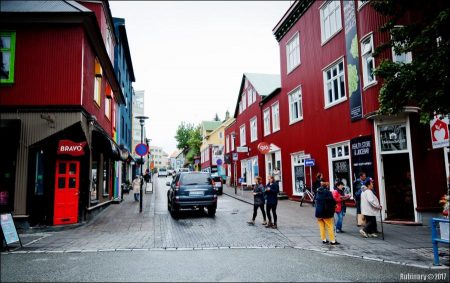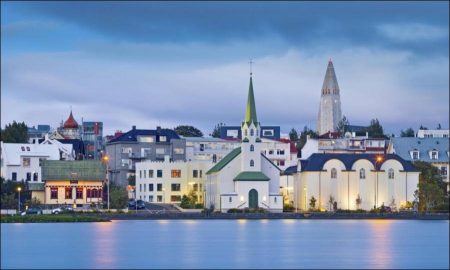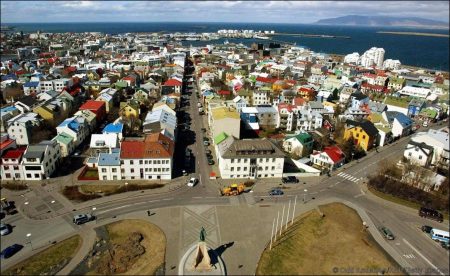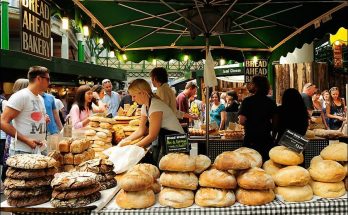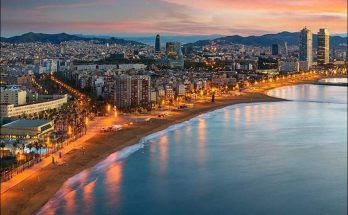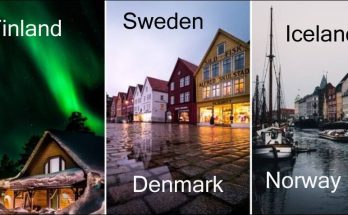Despite being one of Europe’s smallest capital cities, the lively Icelandic hotspot offers all the cultural perks of a much larger place. With just 200,000 residents, Reykjavík ranks as one of Europe’s smallest capital cities. But when Iceland’s total population only hovers around 300,000, it makes sense that the capital is known as the “big city” and offers all the cultural perks of a much larger place.
“From live music almost every night to cosy cafes, colourful houses and friendly cats roaming the street, Reykjavík has all the charms of a small town in a fun capital city,” said Kaelene Spence, who moved from Oregon, United States, in 2014 and writes about the expat experience on her blog Unlocking Kiki.
Downtown Reykjavik (Credit: Credit: Odd Andersen/AFP/Getty Images)
Downtown Reykjavik (Credit: Odd Andersen/AFP/Getty Images)
The city has a surprisingly lively nightlife for its size; it’s always buzzing during weekday happy hour and can go on until the early morning on weekends. According to Spence, the city has a “laid-back hipster vibe” thanks to its independent, hard-working, friendly residents.
The spectacular scenery surrounding the city entrances locals as much as visitors. It even served as a filming location for many scenes in the popular Game of Thrones television show. “In Reykjavík, by the oceans, you can see distant landscapes easily from the downtown centre and there are very few skyscrapers [to block the views],” said Ragna Rök Jóns, who moved to the city from Los Angeles six years ago.
Where do you want to live?
According to locals, you need to live downtown to really appreciate and enjoy the city. “That’s where all the action is,” Spence explained. That said, the popular downtown areas – the 101, 105 and 107 postcodes – are becoming increasingly expensive. For less pricey options, Spence recommends Seltjarnarnes, a peninsula 5km to the west with plenty of walking trails along the coast, or Laugardalur, the hot spring valley 5km to the east, known for having the city’s largest outdoor geothermal pool.
Vesturbær (West Side) is home to the University of Iceland and is another affordable location that’s close to downtown. For expats looking for distance [and peace and quiet], “Garðabær and Kópavogur are good places,” Jóns said, with each suburb about 10km and 4km south of the city centre respectively.
What do you want to live in?
Almost everyone in the city lives in apartments; even houses within the city are usually broken up into individual flats by floor. While the buildings may look traditional on the outside, modern, stylish furnishings are de rigeur within. “Icelanders love to stay up with all the latest trends,” Spence said.
Would-be renters should be prepared to move quickly if they see a potential place. “Icelanders tend to own their homes, so the rental market is small,” said Anna Andersen, editor of the local English newspaper the Reykjavík Grapevine. Apartments tend to rent within a few days of being listed. The 2008 financial collapse only tightened the market further as loan approvals became harder to come by and new construction projects stalled.
While travellers flock to Iceland for its scenery and geothermic wonders, residents also appreciate the country’s beauty and love how easy it is to get out of the city. Þingvellir National Park, located just 50km west of Reykjavík’s centre, has fishing, hiking and scuba diving, as well as a historic monument commemorating the Iceland’s first parliament, assembled here in 930 AD. “Here you can see the beautiful two-cascade Gullfoss waterfalls,” said Guðrún Þórisdóttir, an Iceland native who operates many of the Grayline Tours around Iceland. “In the geothermal area around the Geysir hot springs, you can see the Strokkur hot spring spout every six to eight minutes.”
Since Reykjavík is the only large city in the sparsely populated island-country, residents looking for another big city experience can hop over to Europe on numerous short flights, or take a six-hour flight to New York City. Tickets aren’t exactly cheap, however; European flights costs at least 66,300 Icelandic krona while North American flights can easily reach 132,500 Icelandic krona.
How much does it cost?
The small capital does come with big city prices. Residents say it’s comparable to other European cities, while cost-of-living site Expatistan.com ranks Reykjavík as the 35th most expensive city in the world.
Housing is becoming increasingly costly, especially close to downtown, with an 85sqm apartment renting for 213,600 Iceland krona per month. Luxury goods like big screen TVs and clothes are particularly expensive, costing 30% to 60% more than in London due to hefty import taxes. In turn, many residents shop for their clothes and electronics abroad.
Living in a geological hotspot does have its advantages, however. Since nearly all of Iceland’s energy is produced by renewable hydroelectric and geothermal power sources, energy and utility bills can be almost 60% cheaper than in other cities.
Visits: 166
